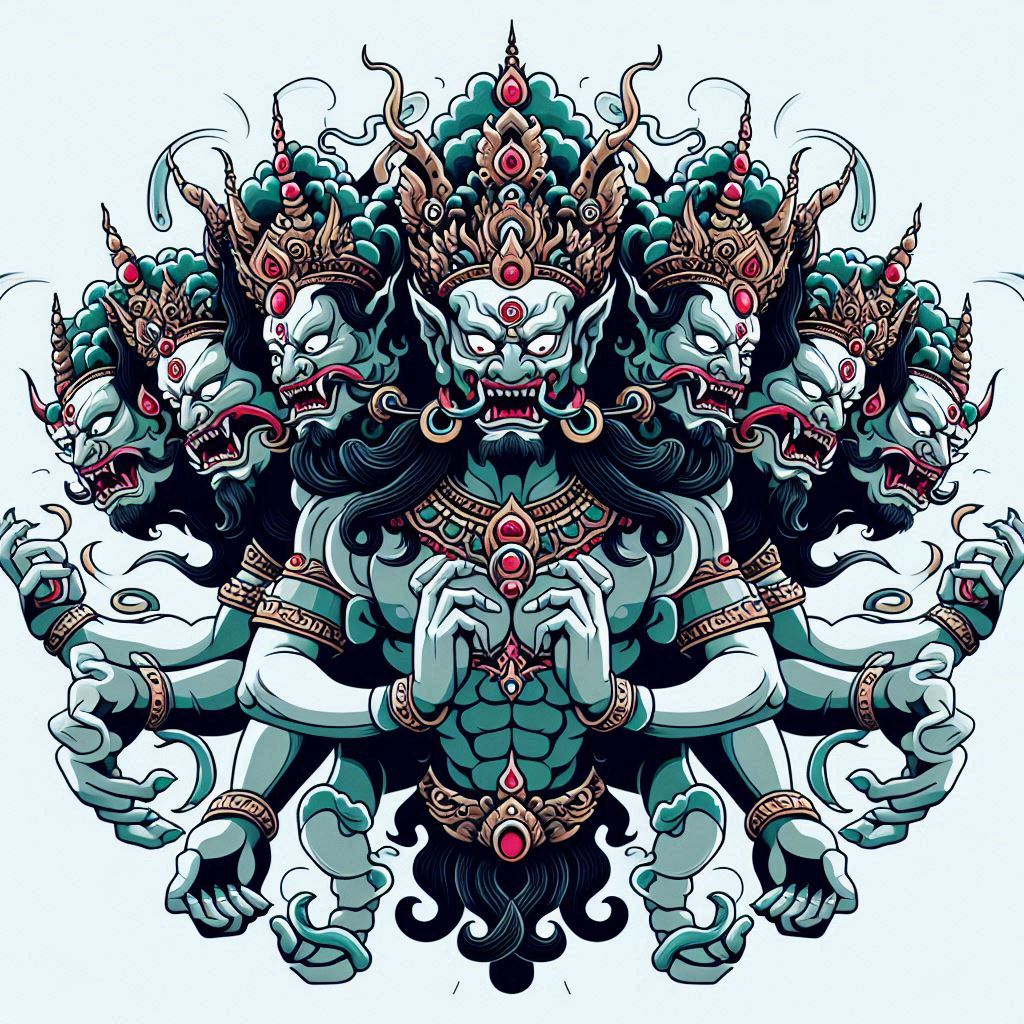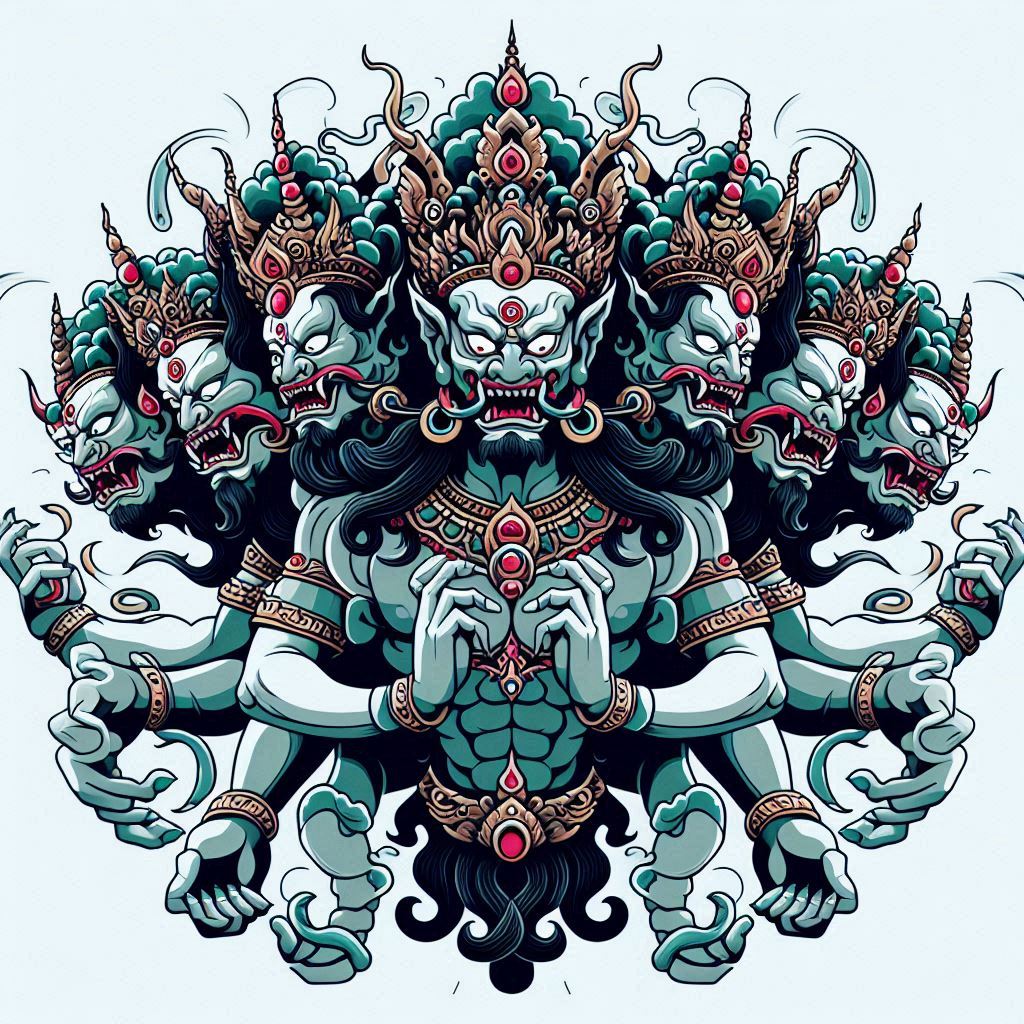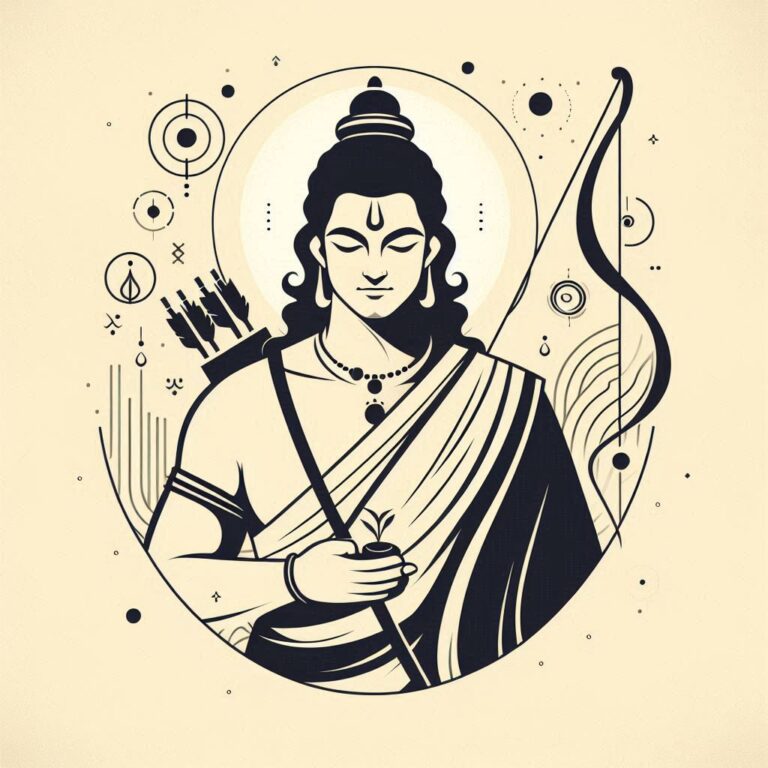Ravana’s Strategic Defense: Unraveling Ancient Tactics in Ramayana
Unraveling Ravana’s Strategic Defense
When you think of the epic Ramayana, what pops into your mind? Probably the heroic persona of Rama, the unwavering devotion of Hanuman, or perhaps the legendary beauty of Sita. But what about Ravana? He’s often labeled the villain, yet hidden behind that demon king’s fierce exterior are some of the most brilliant strategies and defense tactics in ancient lore. Just as a chess grandmaster thinks three moves ahead, Ravana devised plans that were not just about brute force but cunning and intellect.
In this blog, we’ll dive deep into Ravana’s strategic acumen, unraveling the layers of his defense mechanisms and military strategies. By the end, you might just find a newfound respect for one of literature’s most misunderstood characters.
Who is Ravana?
Before we get into the nitty-gritty of Ravana’s strategies and defenses, let’s take a moment to understand who he really was. Ravana, the king of Lanka, was not just a powerful demon; he was also a learned Brahmin, a master of the Vedas, and highly skilled in various forms of knowledge. His portrayal in the Ramayana shows him as a multi-layered character: a devout devotee of Lord Shiva, a loving husband, and a formidable foe.
The Duality of Ravana
It’s fascinating to note how Ravana embodies both wisdom and folly, power and weakness. His intelligence was astounding; for instance, he created a city of gold—Lanka—complete with luxurious palaces and well-planned defense systems. But, he fell victim to his own hubris, allowing his desire for Sita to cloud his better judgment.
The Art of War: Ravana’s Strategies
Ravana was not just a warrior; he was a strategist. His approach to warfare can be dissected into several key components, each displaying a unique understanding of both offense and defense.
1. Knowledge is Power
A well-rounded education is often touted as a pathway to success. Ravana knew this all too well. His extensive knowledge of the Vedas made him a formidable opponent in battle. Utilizing his understanding of various disciplines, he could anticipate his enemies’ moves, counter their strategies, and turn the tide of warfare in his favor.
Dohas and Shlokas:
Here’s an example that captures this essence:
शिक्षा ही शक्ति पुरुष की, लंका की सामर्थ्य।
शक्तिमान का ही स्थान है, जानो ये असामर्थ्य।
(Shiksha hi shakti purush ki, Lanka ki samarthya.
Shaktimaan ka hi sthan hai, jaano ye asamarthya.)
Translation: Knowledge is the strength of man, the power of Lanka. Know, that only the strong have a place in this realm.
2. Fortifications and Infrastructure
Lanka was fortified with walls that were high and thick. Its geographical positioning—surrounded by the ocean and with easy access to the mountains—added layers to its natural defense. Ravana understood the importance of strategic positioning, much like how a fortress needs both walls and a clever layout to withstand sieges.
He learned from past mistakes and built a city that was not merely grand but defensively sound. This awareness of geography is pivotal and timeless in understanding warfare and its intricacies.
3. Psychological Warfare
Ravana was a maestro of psychological tactics. He knew how to instill fear and confusion among his enemies. Consider this: instead of merely attacking Rama’s forces, he orchestrated events that showcased his power and control, hoping to intimidate them into submission.
Shloka:
यस्तु माया समाख्यातो, संतोषं यते मनः।
सर्वं शान्तं महाबाहु, लंकेश्वरं जयेव तत्।
(Yastu maya samakhyato, santoshm yate manah.
Sarvam shantam mahabaahu, Lankeshvaram jayev tat.)
Translation: He who knows illusions, and calms his mind, will conquer the great lord of Lanka.
4. Deceptive Alliances
In war, alliances can be a double-edged sword. Ravana was adept at forming temporary alliances with various demons and mythical creatures. However, he was also quick to sever ties when they no longer served him. This fluid adaptability is akin to modern-day diplomacy, where support is often conditional.
5. The Element of Surprise
Just like the best-laid plans can often go awry, so too can predictability lead to downfall. Ravana embraced unpredictability. Whether it was guerrilla warfare tactics or sudden nighttime raids, he utilized the element of surprise to keep his opponents on their toes. Think of how a magician captures an audience’s attention, leading them to focus on one hand while the other accomplishes something clever behind the scenes.
Dohas and Shlokas:
Attempting the unexpected can lead to success:
कृत्यं न कर्तुं देवता, अनध्वनि प्रगतं भव।
अचानक मात्रायोय्ध कर्तुरस्तु विजयात् भव।
(Krityam na kartum devta, anadhvani pragatam bhav.
Achank matraayoddha karturastu vijayat bhav.)
Translation: To accomplish the deed without a path, becomes the essence of combat under the road of victory.
The Fall of Ravana: Where Did He Go Wrong?
Despite all his intelligent strategies and formidable defenses, Ravana suffered defeat. What could have possibly gone wrong? The answer lies in the duality of his character. His intelligence was frequently overshadowed by arrogance and overconfidence. When you think you’re unbeatable, you tend to overlook even the simplest threats.
Ravana underestimated Rama—this was his Achilles’ heel. His obsession with Sita rendered him blind to the storm brewing at his doorstep, putting a blemish on his otherwise illustrious career as a strategist.
6. Resilience and Adaptation
Even in defeat, Ravana showcased resilience—the hallmark of a great strategist. He fought valiantly despite insurmountable odds and never backed down from the battlefield. He adapted his strategies according to the changing dynamics of warfare and even after his downfall, he remained a figure of fascination.
Dohas and Shlokas:
पराजयं करिष्स्यामि, सदा च रुबाबं सह।
प्राणैकसंकरं पर्वं, अष्वություններ सदा वयम्।
(Parajaym karishyaami, sada cha rubabam saha.
Praan aik sanskaram parv, ashwitayen sada vayam.)
Translation: I will face defeat, standing boldly and calm;
In the crest of every challenge, always at the helm.
Conclusion
Ravana’s strategy and defense mechanisms remind us that a true warrior encompasses more than just physical strength. For he is oftentimes weighed down by his intellect, which, if unchecked, can lead to catastrophic consequences. Unraveling the layers behind Ravana reveals a complex character whose strategies were as intricate as the battles he fought.
So, the next time you revisit the Ramayana or think of Ravana, remember there’s a fascinating story behind the brute—brimming with lessons on strategy, arrogance, and the uncertainties of war.
With every tale, we glean insights, whether they be of wisdom or folly, intrigues or battles. After all, the line between hero and villain often blurs in the pages of history.
FAQs
Q1: What are the key attributes of Ravana as a character?
A1: Ravana is depicted as a powerful warrior, a devoted scholar, a master strategist, and a complex antagonist.
Q2: How did geography play a role in Ravana’s defenses?
A2: The location of Lanka, surrounded by the ocean and her fortified architecture, provided a significant strategic advantage for defense.
Q3: Can Ravana be considered a genius despite his flaws?
A3: Yes, his brilliance in warfare and strategy, combined with his rich knowledge, certainly underscores a genius, albeit flawed by pride.
Q4: What lesson can we learn from Ravana’s downfall?
A4: Overconfidence can lead to defeat; humility and awareness of one’s environment are crucial for success.
Q5: Is there any relevance of Ravana’s strategies in modern warfare?
A5: Many principles, such as psychological warfare, strategic alliances, and adaptability, hold true even in contemporary military strategies.








